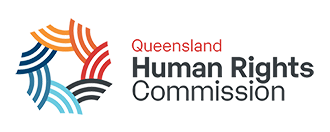Terminology
Terminology is important, and using inclusive terminology should always be the aim. In this guide we use the phrase ‘trans and gender diverse’to acknowledge the many identities in the gender diversity spectrum.
Trans and gender diverse is an umbrella phrase that includes all identities within the gender identity spectrum, including (but not limited to) people who identify as transgender, transsexual, genderqueer, gender fluid, non-binary, sistergirl, brotherboy, trans man, or trans woman.
It’s important to check with individuals what language they prefer. Language is always changing.
Terms used throughout this guide
Gender is part of how a person understands themself. A person’s gender does not necessarily mean that they have particular sex characteristics.
Sex refers to a person’s biological and hormonal sex characteristics. Sex is different from gender.
Gender identity means a person's understanding of themself as male or female, both, or neither. It affects how they perceive themself, and what they call themself. Gender identity can be a fixed and unchanging characteristic for some, however it can also be fluid or evolving for others.
Note: For the purpose of unlawful discrimination, gender identity under the Anti-Discrimination Act 1991 (Qld) is defined in the following terms:
gender identity, in relation to a person, means that the person —
(a) identifies, or has identified, as a member of the opposite sex by living or seeking to live as a member of that sex; or
(b) is of indeterminate sex and seeks to live as a member of a particular sex.
Just to be clear, the definition is based on self-identification rather than legal paperwork including identification documents.
Gender expression is the way in which a person communicates their gender identity to others through behaviour, clothing, appearance, voice, and other forms of presentation.
Gender diverse refers topeople who do not prescribe to binary roles or normative standards of expressing gender. Other identifications that may be used are gender fluid, gender questioning, or genderqueer.
Gender fluid means that a person’s gender identity is not fixed. Some gender fluid people feel very masculine on some days, and feminine on others, while some live free from definition entirely.
Non-binary is used to describe genders that do not fall into binary definitions of male or female.
Affirming gender means affirming the gender that matches a person's gender identity. For example, if a person was assigned male at birth and identifies as female, the person affirms their gender as female.
Cisgender is a term used to describe people whose gender is the same as that assigned to them at birth. ‘Cis’ is a Latin term meaning ‘on the same side as’.
Gender dysphoria is a recognised medical condition in which a person's sex assigned at birth does not match their gender identity or expression, resulting in impaired functioning in daily life. One treatment for gender dysphoria is for the person to undergo a transition. Not all trans and gender diverse people have gender dysphoria and of those who have dysphoria, for many it ceases with access to gender affirming health care.
Transgender (or trans) means that a person does not identify with the sex assigned at birth.
Transitioning is the process by which a person changes aspects of themselves to better match their gender identity.
A medical transition is the process by which a person changes their physical sex characteristics via hormonal intervention and/or surgery to more closely align with their gender identity.
A social transition is the process of making others aware of one’s gender identity, changing name and pronoun in social settings, and changing gender expression.
» Next: Introduction to discrimination and human rights law »



